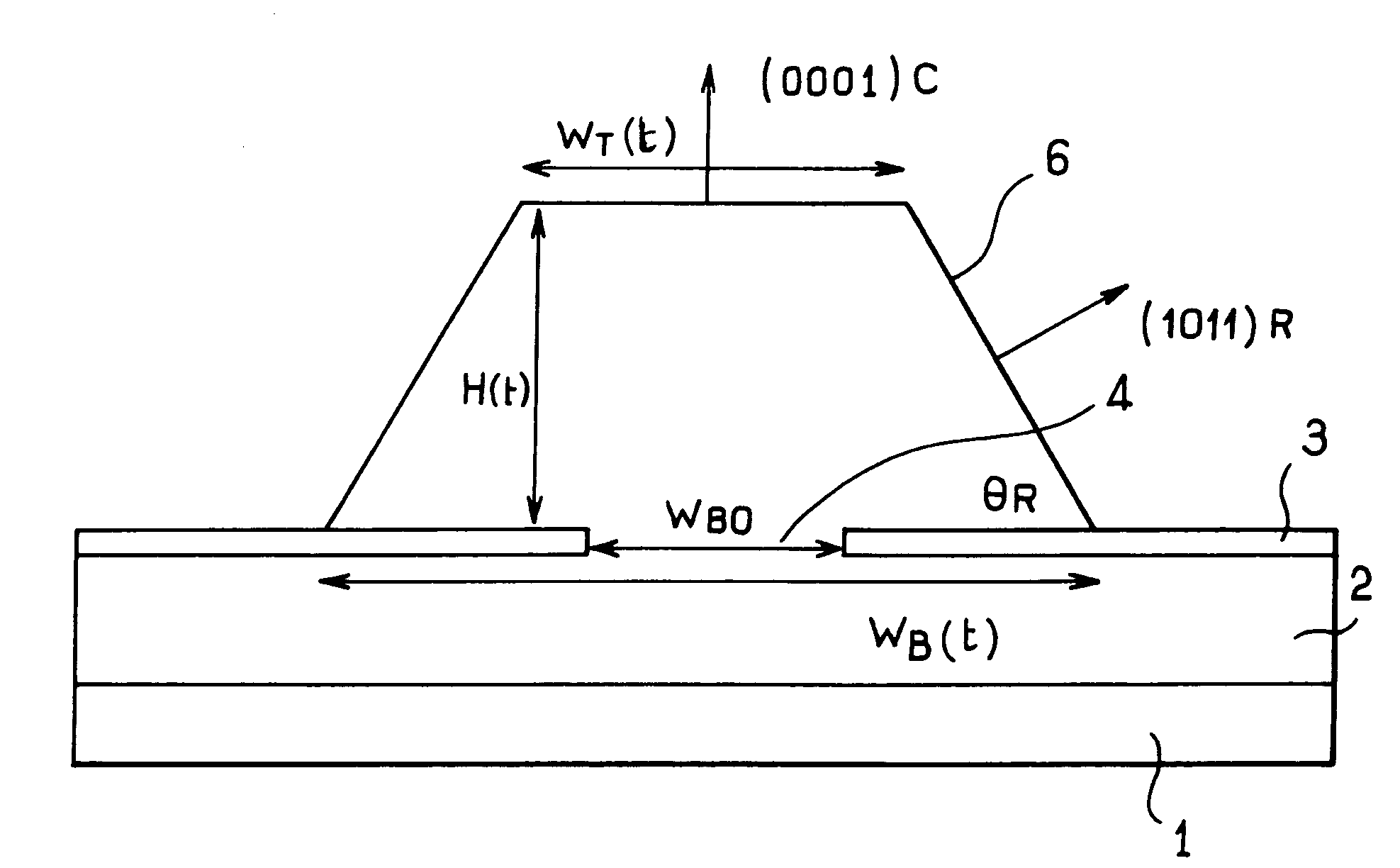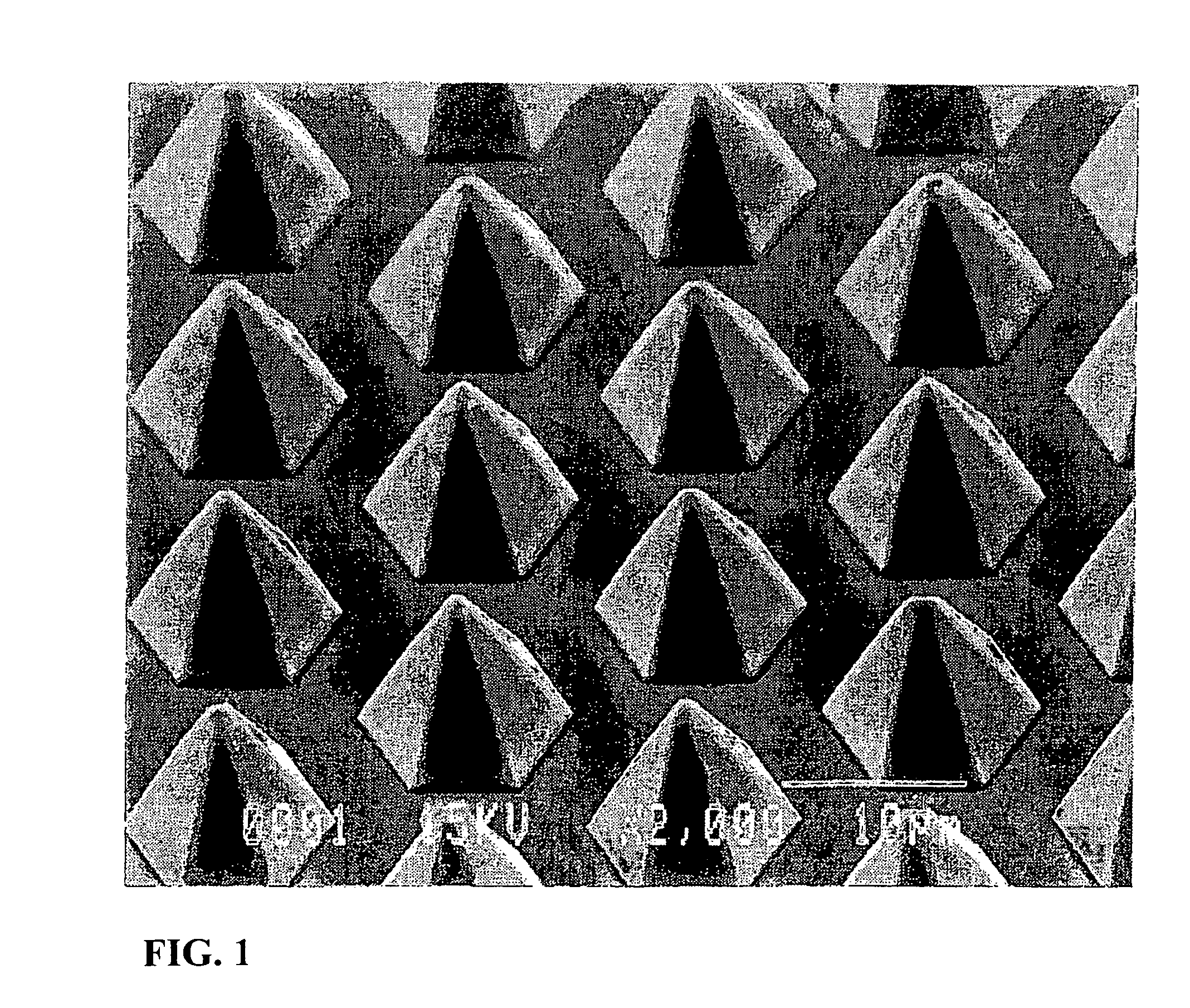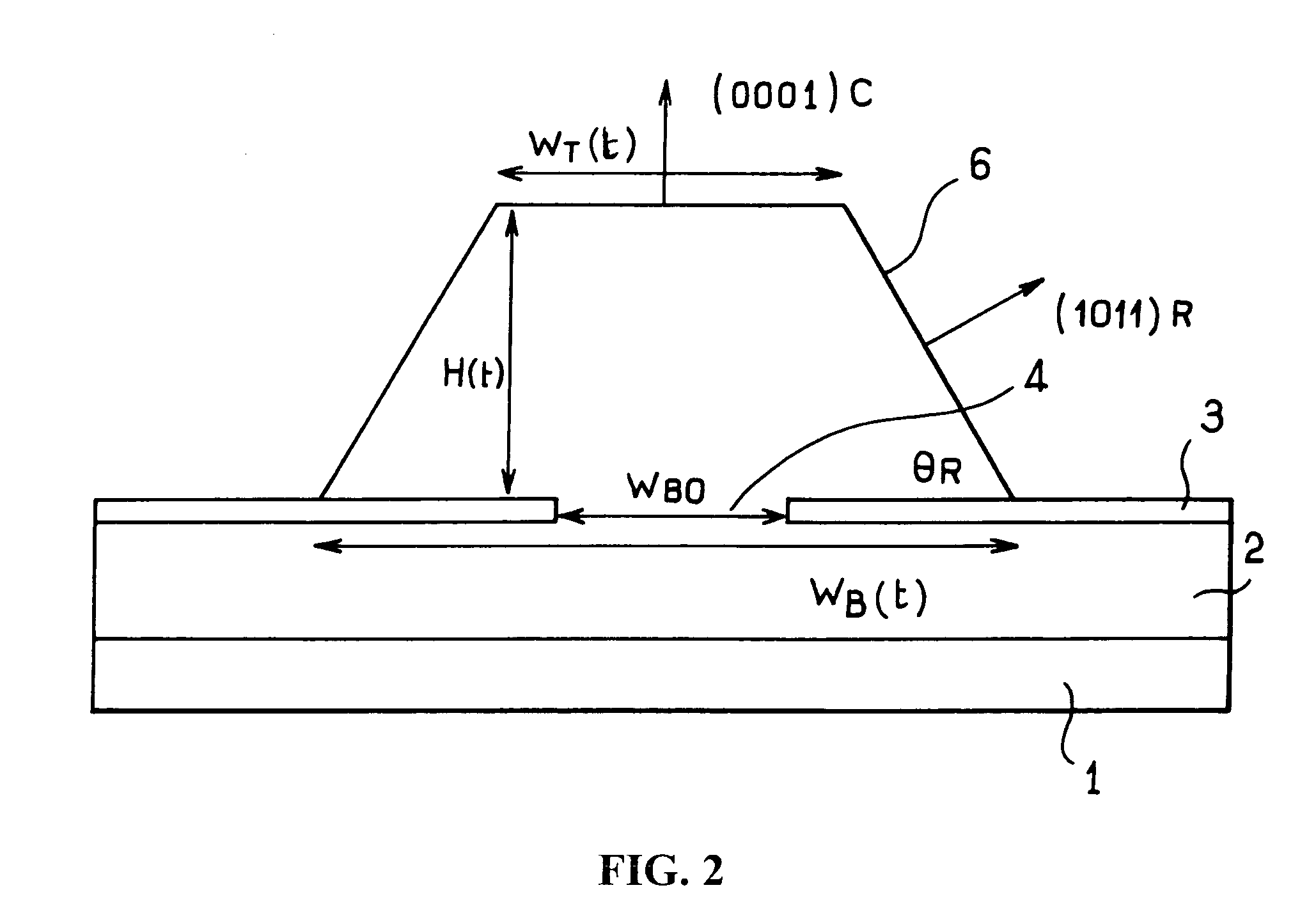Process for producing an epitalixal layer of galium nitride
a technology of galium nitride and epitalix, which is applied in the direction of crystal growth process, basic electric elements, electrical equipment, etc., can solve the problems of affecting the growth of low-defect density iii-n layers, affecting the development of nitride materials, and affecting the growth of lateral growth, so as to improve the effect of lateral growth
- Summary
- Abstract
- Description
- Claims
- Application Information
AI Technical Summary
Benefits of technology
Problems solved by technology
Method used
Image
Examples
example 1
Deposition of an Undoped Gallium Nitride Layer
[0123]A suitable vertical reactor operating at atmospheric pressure is used for the Organometallic Vapor Phase Epitaxy. A thin gallium nitride layer 2 having a thickness of 2 μm is deposited, by orGaNometallic vapor phase epitaxy at 1080° C. on a (0001) sapphire substrate 1 having a thickness of 200 μm. The gallium source is trimethylgallium (TMGa) and the nitrogen source is ammonia. Such a method is described in many documents.
[0124]The experimental conditions are as follows:
[0125]The gaseous vehicle is a mixture of H2 and N2 in equal proportions (4 sl / min.). The ammonia is introduced via a separate line (2 sl / min.).
[0126]After the first gallium nitride epilayer has been grown, a thin layer of a silicon nitride film 3 is deposited as a mask for the subsequent selective growth of gallium nitride using SiH4 and NH3 at a rate of 50 sccm- and 2 slm, respectively.
[0127]The electron transmission microscope observations on cross sections show ...
example 2
Deposition in the Gaseous Phase of a Layer of Gallium Nitride to Which Magnesium Has Been Added
[0134]The experiment of Example 1 is repeated apart from the fact that 2.8 μmol / min. of (MeCp)2 Mg is introduced in the vapor phase. The conditions used are: growth time 30 min., growth temperature 1080° C., TMGa 16 μmol / min. and N2, H2 and NH3 2 sl / min. for each of them.
[0135]FIG. 5 shows that the presence of magnesium increases the VR / VC ratio well above the cos(ΘR) threshold and consequently the (0001) upper facet broaden. The selectivity of the growth is not affected by the presence of (MeCp)2 Mg, but the growth anisotropy is advantageously modified.
example 3
Influence of the Mg / Ga Molar Ratio
[0136]FIG. 4 shows the variation in the growth rates normalized to the TMGA molar flux in the [0001] and [1011] directions as a function of the Mg / Ga molar ratio in the vapor phase.
[0137]In practice, it was chosen to keep a constant flux of (MeCp)2 Mg and to vary the amount of TMGA. This makes it possible to ensure that the available Mg concentration on the surface of the growth islands is identical for all the specimens.
[0138]Because the growth is controlled linearly by the amount of gallium supplied, the growth rates are normalized in order to compare them.
[0139]VNC rapidly decreases from 0.8 to 0.1 μm / h / μmol, while VNR increases from 0.16 to 0.4 μm / h / μmol when the Mg / Ga molar ratio varies from 0 to 0.17. The dotted line is the curve of the VR / VC ratio obtained by extrapolation. The y-axis on the right is VR / VC.
[0140]This curve shows that the incorporation of Mg allows the pyramidal structure to be easily controlled by modifying the growth anisotr...
PUM
 Login to View More
Login to View More Abstract
Description
Claims
Application Information
 Login to View More
Login to View More - R&D
- Intellectual Property
- Life Sciences
- Materials
- Tech Scout
- Unparalleled Data Quality
- Higher Quality Content
- 60% Fewer Hallucinations
Browse by: Latest US Patents, China's latest patents, Technical Efficacy Thesaurus, Application Domain, Technology Topic, Popular Technical Reports.
© 2025 PatSnap. All rights reserved.Legal|Privacy policy|Modern Slavery Act Transparency Statement|Sitemap|About US| Contact US: help@patsnap.com



